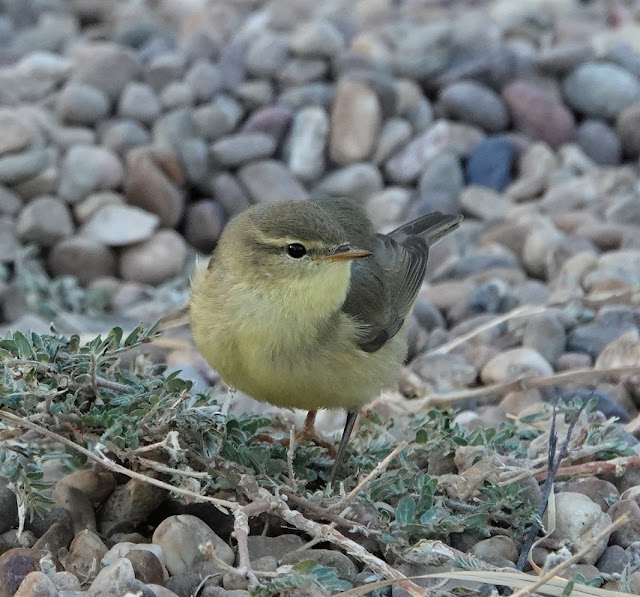Wandering minstrels
 |
| Willow Warbler (Martin Kelsey) |
Nature tells me that by 15th August autumn has arrived in Extremadura. There is something about the freshness at dawn, after nights that have now lengthened to almost ten and half hours long. The turquoise midday sky is now bereft of Black Kites, most of which are already in Africa. And the arrival of a tiny bird from northern Europe marks the change of season with certainty.
This morning I watched a loose group of four of these lemon-soft sprites foraging along our driveway. In tireless fashion they popped in and out of view amongst the narrow leaves of an almond tree. It was an exploration with a search-image of miniscule arthropods, to be found on the underside of the leaves. These were reachable by peering from a perch, or by making a short, fluttering hover just bill-distance from the foliage. Exhausting possibilities there, they flew across the drive onto a patch of lawn and then onto the gravel. So engrossed were they in their morning foray for food, that they ignored me completely. They approached my hidden form, exploring, it seemed, the sides of each pebble in their way.
 |
| Two Willow Warblers (Martin Kelsey) |
The Spanish name for this passage migrant is the Mosquitero Musical (the "musical flycatcher"), whereas I know it by its somewhat more prosaic English name: the Willow Warbler. They caught my imagination when I was a young birder in several ways. I read that they weighed less than 10g, which meant that you could put one in an envelope and post it at standard letter rate. Yet, remarkably they spent the winter in tropical Africa, many travelling as far as South Africa. The arrival of Willow Warblers in Europe is heralded by sound (hence the Spanish name) - to my ears one of the most moving and sweetest of all bird song. A simple, almost fragile, cadence of pure mood-lifting notes, for me in Britain, it marked spring.
In Extremadura, Willow Warblers are birds of passage. They make a brief appearance in spring, stopping just for a few days and often detectable by short bouts of practice singing. For a song so significant to my memories, this moment makes me stop in my tracks and close my eyes. For a few seconds I want no distractions. In this extraordinary lockdown year, I feared that I would miss this experience - but on one morning, on the 16th April to be precise, just for barely a minute, a wavering sweet sound gently weeped from deep in a holm oak tree close to our front gate. And that was that, my only Willow Warbler this spring.
 |
| Willow Warbler in almond tree (Martin Kelsey) |
In the autumn, it is another story. The wandering mistrels are largely silent, bar an occasional soft call note. But they are everywhere. As numbers build up during August and September, they can be encountered not just in the woodland habitat that one would expect, but also right out on the open plains, perched on wire fences and dropping down in the crisp withered grasses to feed. Barren this landscape might appear, but for the Willow Warblers this is likely to be their last prolonged stopover to feed up before making that truly extraordinary crossing of the Sahara Desert. Flying at night to avoid the heat and predators, they will rest, if lucky, at an oasis - if not, then in the shade of a stone. But yet, by mid August Willow Warblers have been recorded in Mauritania, in late August in Kenya and by September, there are already records of Willow Warblers in South Africa.



Comments